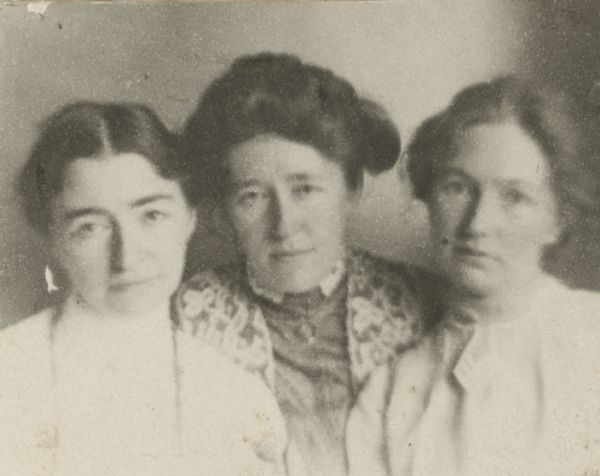

Queer Places:
MacDowell Colony, 100 High St, Peterborough, NH 03458
Riverside Cemetery
Oshkosh, Winnebago County, Wisconsin, USA
 Helen
Farnsworth Mears (December 21, 1872 – February 17, 1916) was an American
sculptor.[1]
Helen
Farnsworth Mears (December 21, 1872 – February 17, 1916) was an American
sculptor.[1]
Mears was born December 21, 1872, in Oshkosh, Wisconsin, daughter of John Hall Mears and [2] Elizabeth Farnsworth (pen names "Nellie Wildwood" and "Ianthe", called the first Wisconsin poetess [3]) and youngest sister to Louise and Mary Mears. Mears studied at the State Normal School in Oshkosh,[4] and art in New York City. In New York, she studied under Augustus Saint Gaudens for two years and worked as his assistant[5] before heading to Paris in 1895 to continue working with Denys Puech (sometimes Puesch), Alexandre Charpentier, and Frederick MacMonnies.[6][7]
Her first success, before any formal art training, was "Genius of Wisconsin", a work commissioned by the State of Wisconsin when she was just 21. The work was exhibited in the Wisconsin Building at the World's Columbian Exposition in 1893.[8] The 9-foot (2.7 m) marble sculpture was executed by the Piccirilli Brothers.[9] It is now housed in the Wisconsin State Capitol.[10] Both she and sculptor Jean Pond Miner were named "artists in residence" at the Wisconsin Building, and that is where she created The Genius of Wisconsin, while Miner produced Forward.[11]
Mears was one of a group of women sculptors christened the "White Rabbits" who worked under Lorado Taft producing sculpture for the World Columbian Exposition.[12]
In 1907, Mears, and her sister, writer Mary M. Mears, were the first colonists at MacDowell Colony.[13]

An informal head and shoulders portrait of Helen Farnsworth Mears
(1872-1916), left, and her sisters Louise Morilla Mears Fargo (1866-1925),
center, and Mary M. Mears (1870-1943). Helen Mears was a recognized sculptor
who had studied with Augustus Saint Gaudens; her sister Mary was the author of
four published novels and several short stories. At the time of this
photograph, Helen and Mary were living together in New York City. Louise was
the wife of Lake Mills businessman Frank B. Fargo.
Her most important works include a marble statue of Frances E. Willard (1905, Capitol, Washington) that is included in the National Statuary Hall Collection; portrait reliefs of Edward MacDowell (Metropolitan Museum, New York); and Augustus St. Gaudens; portrait busts of George Rogers Clark and William T.G. Morton, M. D. (Smithsonian Institution, Washington). In 1904, her "Fountain of Life" (St. Louis Exposition) won a bronze medal. She made New York her residence and exhibited there and in Chicago.
In 1910, George B. Post, the architect of the Wisconsin State Capitol then being designed, attempted to secure the services of the well-known sculptor Daniel Chester French to create a statue of Wisconsin to be placed on top of the dome. French, having as much work as he desired, turned the commission down, and so Post recommended Mears for the job. With the belief that she had the contract, she began working on a model; she ultimately created three models with two of them receiving feedback from the commission.[14] By August 1911, Post suggested that Mears could not complete the design in their time frame, and French was ultimately selected by the commission to complete the sculpture.[14] Mears was paid US$1,500 for the work that she had already done, but the loss of the commission was a shock from which she never recovered.[15][16]
Following the debacle surrounding the Wisconsin capitol statue, Mears's health declined as did her financial well-being. She died at the age of 43 on February 17, 1916 of heart disease.[7][17][18] At the time of her death, she was working in her studio at 46 Washington Square South, in Greenwich Village.
My published books: